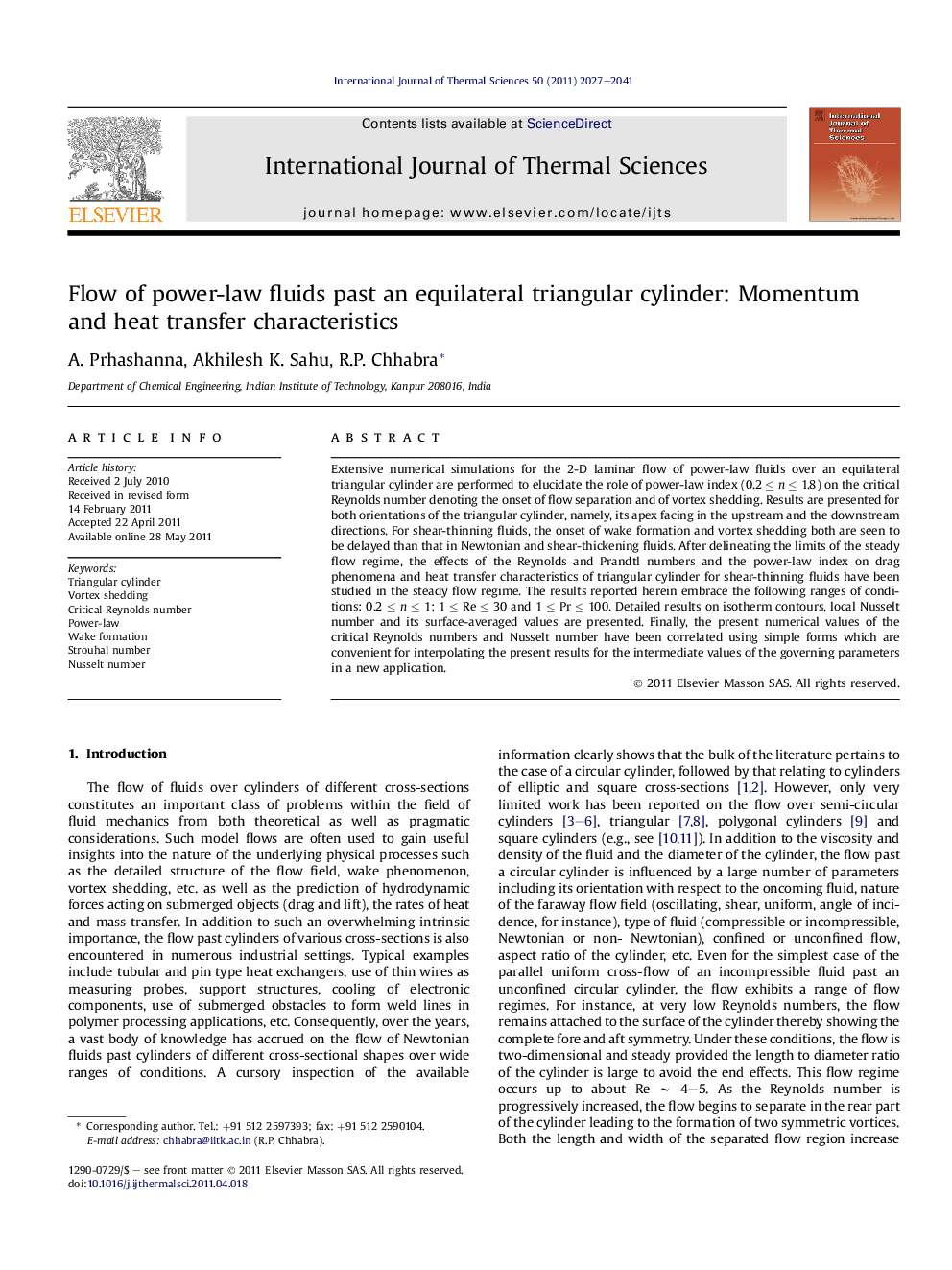| Article ID | Journal | Published Year | Pages | File Type |
|---|---|---|---|---|
| 669175 | International Journal of Thermal Sciences | 2011 | 15 Pages |
Abstract
Extensive numerical simulations for the 2-D laminar flow of power-law fluids over an equilateral triangular cylinder are performed to elucidate the role of power-law index (0.2 â¤Â n â¤Â 1.8) on the critical Reynolds number denoting the onset of flow separation and of vortex shedding. Results are presented for both orientations of the triangular cylinder, namely, its apex facing in the upstream and the downstream directions. For shear-thinning fluids, the onset of wake formation and vortex shedding both are seen to be delayed than that in Newtonian and shear-thickening fluids. After delineating the limits of the steady flow regime, the effects of the Reynolds and Prandtl numbers and the power-law index on drag phenomena and heat transfer characteristics of triangular cylinder for shear-thinning fluids have been studied in the steady flow regime. The results reported herein embrace the following ranges of conditions: 0.2 â¤Â n â¤Â 1; 1 â¤Â Re â¤Â 30 and 1 â¤Â Pr â¤Â 100. Detailed results on isotherm contours, local Nusselt number and its surface-averaged values are presented. Finally, the present numerical values of the critical Reynolds numbers and Nusselt number have been correlated using simple forms which are convenient for interpolating the present results for the intermediate values of the governing parameters in a new application.
Keywords
Related Topics
Physical Sciences and Engineering
Chemical Engineering
Fluid Flow and Transfer Processes
Authors
A. Prhashanna, Akhilesh K. Sahu, R.P. Chhabra,
